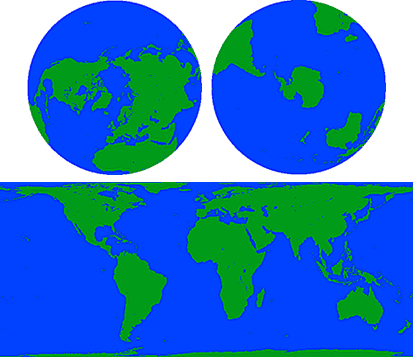A python package for obtaining and manipulating Tb files from the MEaSUREs database
Project description
Important Notes
- Anaconda 3 recommended
SWEpy Quick Start Guide
For Full Documentation, Please see the Wiki!
SWEpy is a python library designed to give you quick and easy access to temperature brightness imagery stored in the MEaSUREs dataset in the NSIDC 0630 database. SWEpy contains tools to web scrape, geographically subset, and concatenate files into time cubes. There is an automated workflow to scrape long time series while periodically stopping to geographically subset and concatenate files in order to reduce disk impact.
Setup:
1. Setup Earthdata Login
Create an Earthdata account to be able to download data: https://urs.earthdata.nasa.gov/
2. Setup conda environment from yaml (Recommended)
The libraries used in this analysis, namely pynco, can be finicky with the channels that dependencies are installed with. Thus, using the provided yaml file to build an environment for this project will make your life simpler. You can add more packages on top of the provided environment as long as you install with the conda-forge channel.
Using the yaml file (.yml) create a new conda environment
conda env create -f swepy_env.yml
Alternative: Install SWEpy Using Conda or pip:
SWEpy is available from anaconda, and will install all dependencies when installed. It is also available from pip (Pypi), but will not install all the dependencies automatically.
** Important ** conda-forge must be the first channel in your .condarc file followed by wino6687.
channels:
- conda-forge
- wino6687
- defaults
conda install swepy
# or
pip intall swepy
** Note ** If you do not have my channel wino6687 in your .condarc file, then you will need to specify the channel when installing: conda install -c wino6687 swepy
3. Install ipykernel (if using jupyter and conda environments)
source activate swepy_env
python -m ipykernel install --user --name <env name> --display-name "<display name>"
Do not include the brackets <>
Using SWEpy for analyzing SWE:
- Import the Library:
from swepy.swepy import swepy
-
Instantiate the class with working directory, date range, bounding coordinates, and earthdata username and password
upper_left = [lon_upleft, lat_upleft] lower_right = [lon_lowright, lat_lowright] start = datetime.date(startY, startM, startD) end = datetime.date(endY, endM, endD) path = os.getcwd() username = "username" password = "password" swe = swepy(path, start, end, upper_left, lower_right, username, password, high_res = True)
-
Don't forget to orient your upper-left and lower-right bounding coordinates with the EASE Grid 2.0 Orientation:
- By default, the high_res parameter is set to True, meaning it will scrape high resolution images. If it is passed as 'False' then it will scrape 25km images instead of the 6.25km high resolution images.
-
Get Files
a. Use desired functionality, either separate or individually:
swe.scrape() swe.subset() swe.concatenate() swe.concatenate(swepy.subset(swepy.scrape()))
b. Or, use
scrape_allto avoid massive file sizes:swepy.scrape_all()
This limits the number of full-size images on your disk at one time.
-
If you need to give the class more information, or change information it already has, use the
set_paramsfunction:swe.set_params(ul = [-145,66], lr = [-166, -16])
Using SWEpy's Web Scraper Alone:
- The web scraper is enabled automatically in the scrape_all workflow, however it can also be used as a standalone function!
from swepy.nsidcDownloader import nsidcDownloader
## Ways to instantiate nsidcDownloader
nD = nsidcDownloader.nsidcDownloader(username="user", password="pass", folder=os.getcwd())
## Download a file:
file = {
"resolution": "3.125km",
"platform": "F17",
"sensor": "SSMIS",
"date": datetime(2015,10,10),
"channel": "37H"
}
nD.download_file(**file)
Main Dependencies:
- gdal
- affine
- requests
- scikit-image
- pynco
- netCDF4
- datetime
- tqdm
- pandas
Troubleshooting:
-
Missing image error when loading in swepy or when calling swepy functions
- These are channel dependency errors and likely arise due to some of your packages being on conda-forge and others being on other channels. Namely,
pyncostruggles with this. - Make sure
conda-forgeis at the top of your.condarcfile and then run aconda update --all. - https://conda-forge.org/docs/conda-forge_gotchas.html#using-multiple-channels
- These are channel dependency errors and likely arise due to some of your packages being on conda-forge and others being on other channels. Namely,
-
Importing SWEpy fails, or pandas fails to find numpy.
- This seems to be an issue caused by numpy v1.15.0. I reverted back to 1.14.5 and reinstalled everything and it worked again.
If you experience any other issues, do not hesitate to open an issue in this repo!
Citations:
This library is designed to work with the MEaSUREs CETB dataset:
Brodzik, M. J., D. G. Long, M. A. Hardman, A. Paget, and R. Armstrong. 2016. MEaSUREs Calibrated Enhanced-Resolution Passive Microwave Daily EASE-Grid 2.0 Brightness Temperature ESDR, Version 1. [Indicate subset used]. Boulder, Colorado USA. NASA National Snow and Ice Data Center Distributed Active Archive Center. doi: https://doi.org/10.5067/MEASURES/CRYOSPHERE/NSIDC-0630.001. [June 2018].
Project details
Release history Release notifications | RSS feed
Download files
Download the file for your platform. If you're not sure which to choose, learn more about installing packages.

















